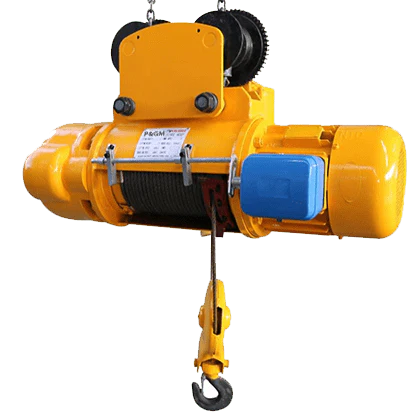Overcoming Common Challenges When Operating Electric Hoists
Operating electric hoists can present several challenges, but with proper knowledge and preparation, these obstacles can be effectively managed. From safety concerns to technical issues, addressing these common challenges is essential for ensuring smooth and efficient hoist operation. Safety is paramount when operating electric hoists. One of the most significant challenges is ensuring that all personnel involved are adequately trained in hoist operation and safety procedures. This includes proper training in load capacity, rigging techniques, and emergency protocols. Regular safety training sessions should be conducted to keep operators up-to-date with best practices and regulations. Another challenge is maintaining the hoist’s mechanical integrity. Electric hoists undergo significant wear and tear over time, especially with frequent use. Regular inspections and maintenance are crucial to identify any potential issues before they escalate into safety hazards or cause downtime. This includes checking for worn components, lubricating moving parts, and verifying proper alignment. Electrical malfunctions can also pose challenges when operating electric hoists.

These malfunctions can result from various factors, including power surges, wiring issues, or component failures. To mitigate this risk, it is essential to have qualified personnel perform routine inspections of the electrical system, including cables, connectors, and control panels. Additionally, investing in surge protection devices and backup power sources can help prevent damage from electrical fluctuations. Another common challenge is ensuring proper load handling and positioning. Improperly rigged loads or inadequate lifting techniques can lead to accidents, equipment damage, or product loss. Operators must be trained to assess load characteristics, including weight, shape, and center of gravity, to determine the safest lifting approach. Additionally, using appropriate rigging equipment, such as slings, shackles, and spreader bars, can help distribute the load evenly and prevent damage to the hoist or the load. Environmental factors can also affect electric hoist operation. Extreme temperatures, humidity, dust, or corrosive substances can affect the hoist’s performance and lifespan.
Implementing preventive measures, such as installing protective covers, using corrosion-resistant materials, or controlling environmental conditions, can help mitigate these challenges and prolong the hoist’s longevity. Communication is vital when operating polipasto electrico, especially in industrial settings where multiple personnel are involved. Clear and concise communication ensures that everyone understands their roles and responsibilities, reducing the risk of accidents or errors. Using standardized signals or communication devices, such as two-way radios or hand signals, can help coordinate movements and improve overall safety. Finally, regulatory compliance is essential for operating electric hoists legally and safely. Depending on the jurisdiction and industry, there may be specific regulations and standards that hoist operators must adhere to, such as OSHA Occupational Safety and Health Administration guidelines in the United States. Staying informed about these regulations and regularly auditing hoist operations for compliance can help avoid fines, penalties, or legal liabilities.